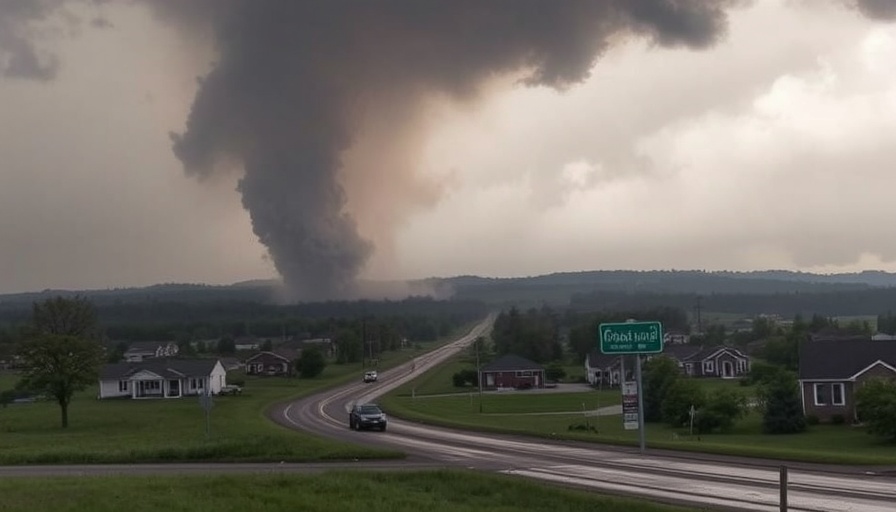
Monster Storm Causes Chaos Across the U.S.
A severe weather system has wreaked havoc across the United States, leaving a trail of destruction that has claimed at least 26 lives and injured dozens more. As this catastrophic storm rolls through, residents in affected areas are grappling with the aftermath. Tornadoes, dust storms, and wildfires have struck multiple states, illustrating the volatile nature of this unprecedented weather event.
Missouri Hit Hardest with Fatalities
Missouri has borne the brunt of this storm, recording the highest number of fatalities. According to authorities, at least 12 people have died in the state, with damage assessments still ongoing. Among the tragic incidents, many lost their lives as tornadoes tore through their homes, leaving behind nothing but debris. Coroner Jim Akers described the devastation: "It was unrecognizable as a home. Just a debris field," capturing the heartbreaking reality faced by families.
Impacts from Dust Storms and Pileups
The storm system unleashed ferocious winds that created hazardous conditions. In a separate incident in Kansas, a dust storm resulted in a catastrophic highway pileup involving more than 50 vehicles, leading to at least eight fatalities. This grim event highlights the broader risks posed by the storm, as strong winds caused poor visibility conditions that resulted in widespread traffic accidents.
Widespread Damage Across Multiple States
Arkansas has also reported significant casualties, with three fatalities and dozens injured across eight counties. Governor Sarah Huckabee Sanders emphasized the extensive damage as crews assess the impact of an EF3 tornado that ripped through the state. She stated, "The visual nature of this disaster makes the need for a swift recovery clear," identifying the crucial role of local and federal assistance in rebuilding efforts.
The Growing Wildfire Danger in Texas and Oklahoma
While tornadoes wreaked havoc across the Midwest, the Southern Plains faced another crisis: wildfires driven by high winds and dry conditions. In Oklahoma, one of the largest blazes led to mandatory evacuations, destroying over 290 structures and consuming around 170,000 acres. Governor Kevin Stitt declared a state of emergency, revealing how intertwined the impacts of extreme weather can be, combining tornadoes and wildfires into a perfect storm of devastation.
Historical Context of Severe Weather Events
This storm is not an isolated incident; meteorological experts note that March has a history of severe weather extremes. Bill Bunting from the National Weather Service remarked, "What’s unique about this one is its large size and intensity," suggesting that while these weather patterns are not unprecedented for spring, the scope of destruction has escalated dramatically.
The Social Impact: Community Resilience and Recovery
As communities begin to assess their losses, resilience in the face of adversity becomes paramount. Local responders, volunteers, and organizations are stepping up to provide aid to those affected. Many survivors have expressed their gratitude for the community support, emphasizing how essential collective efforts are in recovery. Dakota Henderson, who assisted in rescue efforts, captured the spirit well: "It’s really disturbing for what happened to the people, the casualties last night," but added, "We’re here together to help one another survive and rebuild.
Future Weather Predictions and Preparedness
As the storm system progresses, forecasts indicate it may continue to produce severe weather across the East Coast. Residents are urged to remain vigilant as the National Weather Service issues prolonged tornado watches and warnings. The ongoing nature of this severe weather underscores the necessity of preparation and community awareness in reducing the impact of future extreme weather events.
Call to Action: Stay Informed and Prepared
As weather experts predict further incursions of severe weather, staying informed and prepared is crucial. Individuals are encouraged to seek local news updates and adhere to weather advisories. For Dallas residents and beyond, joining local alerts and engaging with community response organizations can help forge a united front against severe weather threats.
 Add Element
Add Element  Add Row
Add Row 



 Add Row
Add Row  Add
Add 


Write A Comment